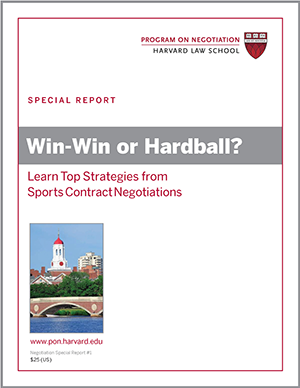
What labor negotiation strategies can help negotiators achieve avoid strikes and reach a win-win negotiation? Professionals seeking to avoid not only labor strikes but impasse in general can apply lessons from real-world labor disputes, including the 2012 Chicago teachers’ strike, to their own workplace negotiations.
Tackle Tough Issues Together
When a difficult negotiation such as a labor contract renegotiation looms, it can be tempting for each side to try to make unilateral decisions on certain issues in the belief that negotiations will be a dead end. This strategy may pay off in the short term, but it’s important to factor in the long-term costs of failing to negotiate key issues.
Take the 2012 contract negotiations between the Chicago Teachers Union (CTU) and the City of Chicago, which led to a 10-day strike. After being elected mayor of Chicago in February 2011, Rahm Emanuel, President Obama’s former chief of staff, lobbied the Illinois state legislature hard for an education-reform bill targeted at Chicago’s troubled school district that included changes to collective bargaining between the city and the CTU. Specifically, the bill, which passed in May 2011, raised the percentage of CTU members who must vote in favor of a strike from 50% to 75%. The new law, known as SB7, also effectively prevented the CTU from striking over issues other than teacher salaries and limited the issues that could be negotiated—leaving out class size, for instance.
Outraged, the union viewed the law as a signal that the new mayor was aggressively anti-union. Chicago’s Emanuel-appointed school board then further alienated Chicago teachers by rescinding a promised 4% pay raise and, at the same time, upping the salaries of newly installed CPS executives. Emanuel then began a campaign, ultimately successful, over a single education issue—his quest for a longer school day. But instead of negotiating with the CTU, he launched negotiations with individual schools.
Entering the Strike Zone
The union was further frustrated when the Chicago School Board delayed negotiations over the teachers’ new contract, leaving only weeks for the parties to come to agreement on a host of issues, including teacher salaries, evaluations, availability of books and other supplies, and air conditioning in schools.
On June 6, 2012, an overwhelming 90% of CTU members voted to strike, far exceeding the 75% required by the new state law. Both sides turned down the recommendation of an independent arbitrator on the issue of teacher salaries. As thousands of Chicago Public Schools teachers joined picket lines across the city on September 10, Chicago parents scrambled to make arrangements for their children’s care. Ten days later, the CTU and the school board finally reached a breakthrough on a deal that provided victories for both sides, including a longer school day and annual teacher raises.
5 Top Labor Negotiation Strategies
A case could be made that dramatic reforms were needed to improve Chicago schools. But if one of Emanuel’s goals was to avoid a teacher strike, as suggested by his support of SB7, then his strategy of dodging and delaying negotiations with the CTU and limiting the number of issues on the table was counter to a win-win negotiation strategy.
The combative and destructive nature of this strike suggests the following 5 labor negotiation strategies and win-win negotiation skills for others engaged in potentially contentious labor negotiations:
- Keep it cordial. Prior to negotiations, avoid provoking the other side with legal maneuvers, side deals, and other tactics that could worsen tensions.
- Start early. When you engage your counterpart as early as possible in the timeline of a negotiation, you demonstrate your interest in building rapport and exploring options together.
- Imagine worst-case scenarios. Recognizing that overconfidence could inspire unrealistic expectations on both sides, thoroughly assess the potential ramifications of a prolonged strike.
- Make a realistic offer. Prepare an opening offer that is aggressive but not insulting, and back it up with a compelling argument.
- Put it all on the table. By refusing to put limits on the number of topics under discussion, you exponentially improve the chances of discovering tradeoffs that will satisfy both parties—and head off a strike.
What other labor negotiation strategies and win-win negotiation techniques have you found to be helpful?






This is a wonderful lesson and profitable. Continue the the good work!